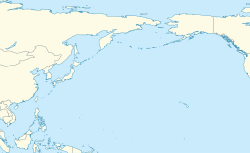Utiroa | |
|---|---|
| Coordinates: 1°13′N174°45′E / 1.217°N 174.750°E | |
| Country | Kiribati |
| Atoll | Tabiteuea |
| Council | North Tabiteuea |
| Island | Aanikai |
| Population (2020) | |
• Total | 774 |
Utiroa is a settlement in Kiribati. It is located on Tabiteuea atoll and is the capital of North Tabiteuea; Nuribenua is to its west, while Terikiai and Eita are to its north.

